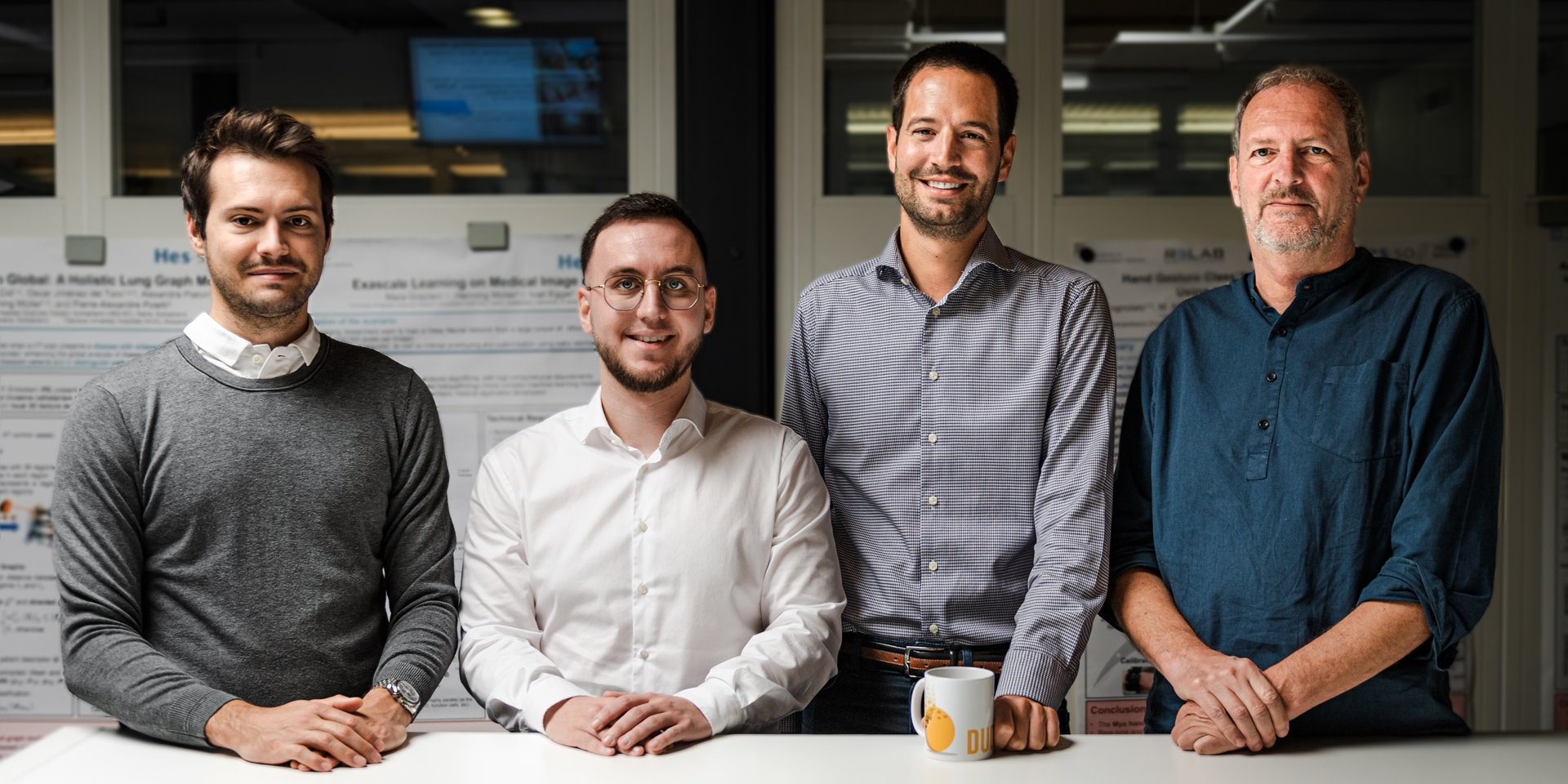DUDE-LAB

Ce projet cherche à améliorer la viticulture en utilisant des outils de Machine Learning pour détecter les objets agricoles dans un vignoble. La viticulture de précision utilise les technologies de l’information afin de perfectionner la gestion des vignes. Une meilleure gestion permet d’améliorer le rendement du vignoble ainsi que de réduire l’utilisation de produits chimiques de traitement. L’analyse et le traitement automatique d’un vignoble nécessitent de connaître le géoréférencement de chaque ligne de vignes. Les coordonnées géographiques des vignes sont cependant longues et difficiles à obtenir correctement avec des moyens traditionnels. Le but de cette recherche est de simplifier cette tâche. Pour ce faire, la détection et la segmentation des lignes de vigne à l’intérieur d’un vignoble doivent être améliorées. Le but de cette recherche est de faciliter l’annotation géographique des lignes de vigne. La majorité des données utilisées ont été collectées pendant le projet avec l’aide d’un drone commercial équipé d’une caméra RGB. Cette recherche a suivi la méthodologie CRISP-DM afin de concevoir un outil de segmentation et localisation des lignes de vignes à l’intérieur d’un vignoble. Un réseau de neurones Mask R-CNN a été modélisé afin de répondre au but de la recherche. Le processus final établi reste facile à utiliser et améliore la précision par rapport au modèle de référence.
Details:
University of Applied Sciences Western Switzerland
Master of Science in Business Administration
Major in Management of Information Systems
Student: Vincent Schülé
Professor: Dr. Dominique Genoud
Date: 24th of August 2018
Related publications:
Schülé, V. (2018, August). Détection automatique d'objets agricoles avec du Machine Learning. Master Thesis.
Machine learning is a useful method to assess biomedical data. However, due to the complexity of these data, it is important to rely on a robust methodology. Predictions with machine learning are not only an add-on to statistical analysis but are a real process of discovering and establishing clinical validity of the diagnostic techniques. This paper describes a machine learning approach to predict balance changes in seniors based on functional magnetic resonance imaging (fMRI) data. Functional MRI results in a huge amount data containing some noise. Thus, a noise filtering technique is proposed and subsequent analyses are conducted with various machine learning algorithms. The best prediction of the balance ability based on brain activation patterns was obtained by applying a neural network approach. This resulted in an area under the curve (AUC) of 0.91. Other learning algorithms such as the tree ensemble are less predictive but allow tracking and better understanding of the source of differentiation. The results are based on a real dataset.
Details:
University of Applied Sciences Western Switzerland
Master of Science in Business Administration
Major in Management of Information Systems
Student: Ranjith Steve Sivagnanaselvam
Professor: Dr. Dominique Genoud
Date: 29th of August 2016
Related publications:
Sivagnanaselvam, R. S. (2016, August). Le Machine Learning permet-il de prédire les détériorations comportementales et cérébrales induites par la vieillesse ? Master Thesis.
Sivagnanaselvam, R. S., Genoud, D., & Taube, W. (2017, July). Methodological approach in prediction of balance with machine learning applied on fMRI data. In Computer and Energy Science (SpliTech), 2017 2nd International Multidisciplinary Conference on (pp. 1-4). IEEE.
Wearable watches provide very useful linear acceleration information that can be use to detect falls. However falls not from a standing position are difficult to spot among other normal activities. This paper describes methods, based on pattern recognition using machine learning, to improve the detection of “soft falls”. The values of the linear accelerometers are combined in a robust vector that will be presented as input to the algorithms. The performance of these different machine learning algorithms is discussed and then, based on the best scoring method, the size of the time window fed to the system is studied. The best experiments lead to results showing more than 0.9 AUC on a real dataset. In a second part, a prototype implementation on an Android platform using the best results obtained during the experiments is described.
Details:
University of Applied Sciences Western Switzerland
Master of Science in Business Administration
Major in Management of Information Systems
Student: Vincent Cuendet
Professor: Dr. Dominique Genoud
Date: 28th of August 2015
Related publications:
Cuendet, V. (2015, August). Fall Detection Device (F2D) : détection de chute basée sur smartwatch Android et machine learning. Master Thesis
Genoud, D., Cuendet, V., & Torrent, J. (2016, March). Soft fall detection using machine learning in wearable devices. In 2016 IEEE 30th International Conference on Advanced Information Networking and Applications (AINA) (pp. 501-505). IEEE.
Product:
The solution Life Plus is available on the website IAT Lab : https://iatlab.ch/produits/life-plus/
In this paper, a model for traffic jam prediction using data about traffic, weather and noise is presented. It is based on data coming from a Smart City in Spain called Santander. The project in this city is called ”Smart Santander” and provides a platform for large-scale experiment based on realtime data. This paper demonstrates the possibility of predicting traffic jams and is a basis to integrate in projects to improve the quality of services. In this work, a cross validation method to ratify our training set is proposed. Data intelligence analysis techniques are used for the prediction with an implementation of Neural Network and Decision Tree algorithms. These algorithms are using different parameters coming from Smart Santander and other external sources. Furthermore, a cross validation process is also integrated to improve the final result. The traffic jam prediction for the next 15 minutes reached an accuracy of 99.95%.
Details:
University of Applied Sciences Western Switzerland
Master of Science in Business Administration
Major in Management of Information Systems
Student: Jérôme Treboux
Professor: Dr. Dominique Genoud
Date: August 2014
Related publications:
Treboux, J. (2014, August). Information systems for smart city traffic-jam prediction. Master Thesis.
Treboux, J., Jara, A. J., Dufour, L., & Genoud, D. (2015, March). A predictive data-driven model for traffic-jams forecasting in smart santader city-scale testbed. In Wireless Communications and Networking Conference Workshops (WCNCW), 2015 IEEE (pp. 64-68). IEEE.